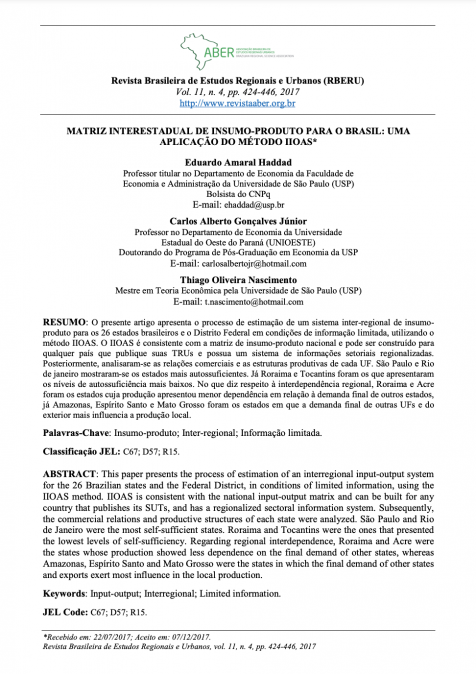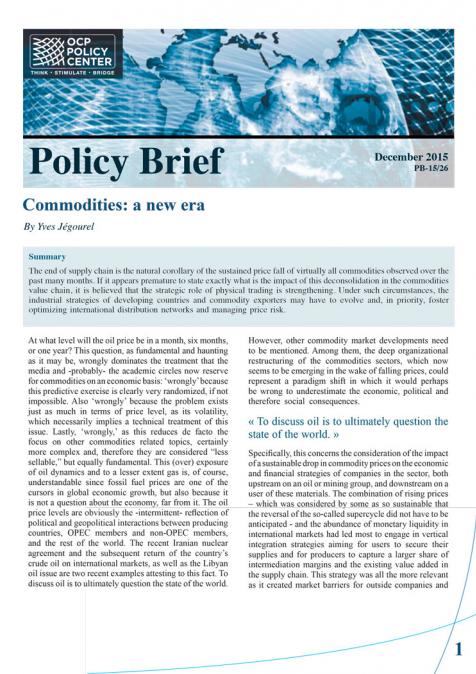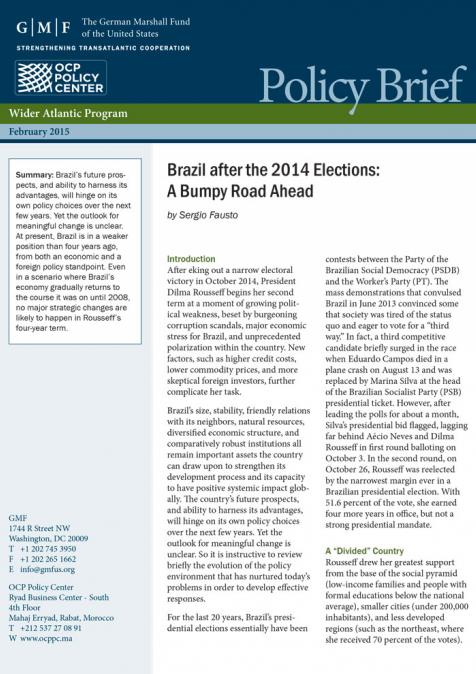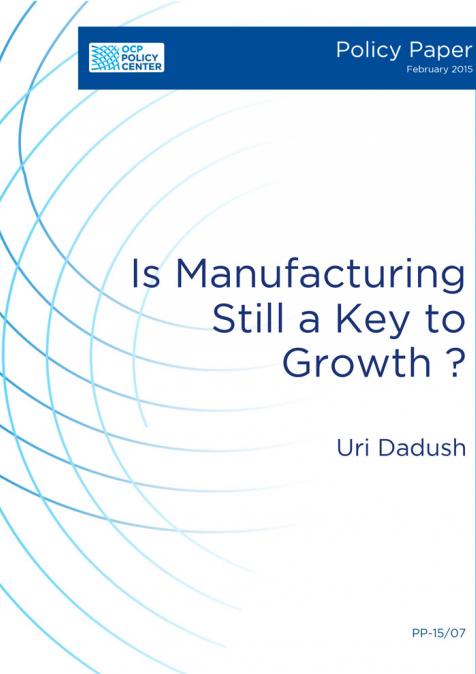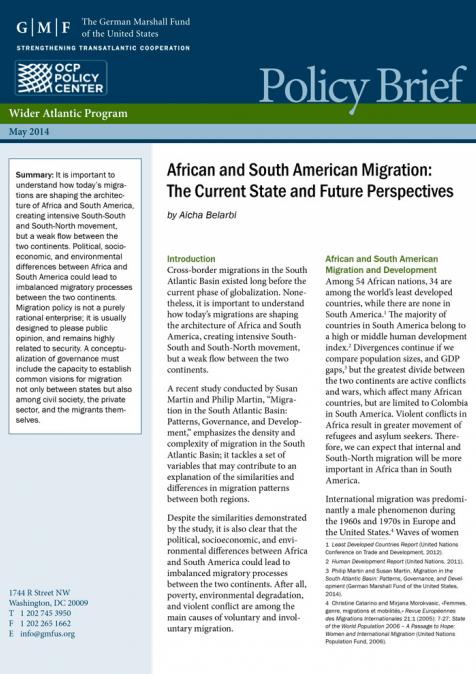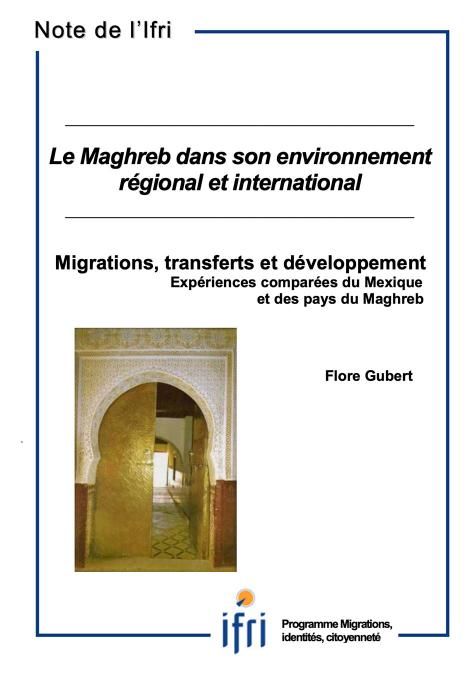Publications /
Paper in Academic Journals
O presente artigo apresenta o processo de estimação de um sistema inter-regional de insumo-produto para os 26 estados brasileiros e o Distrito Federal em condições de informação limitada, utilizando o método IIOAS. O IIOAS é consistente com a matriz de insumo-produto nacional e pode ser construído para qualquer país que publique suas TRUs e possua um sistema de informações setoriais regionalizadas. Posteriormente, analisaram-se as relações comerciais e as estruturas produtivas de cada UF. São Paulo e Rio de janeiro mostraram-se os estados mais autossuficientes. Já Roraima e Tocantins foram os que apresentaram os níveis de autossuficiência mais baixos. No que diz respeito à interdependência regional, Roraima e Acre foram os estados cuja produção apresentou menor dependência em relação à demanda final de outros estados, já Amazonas, Espírito Santo e Mato Grosso foram os estados em que a demanda final de outras UFs e do exterior mais influencia a produção local.

